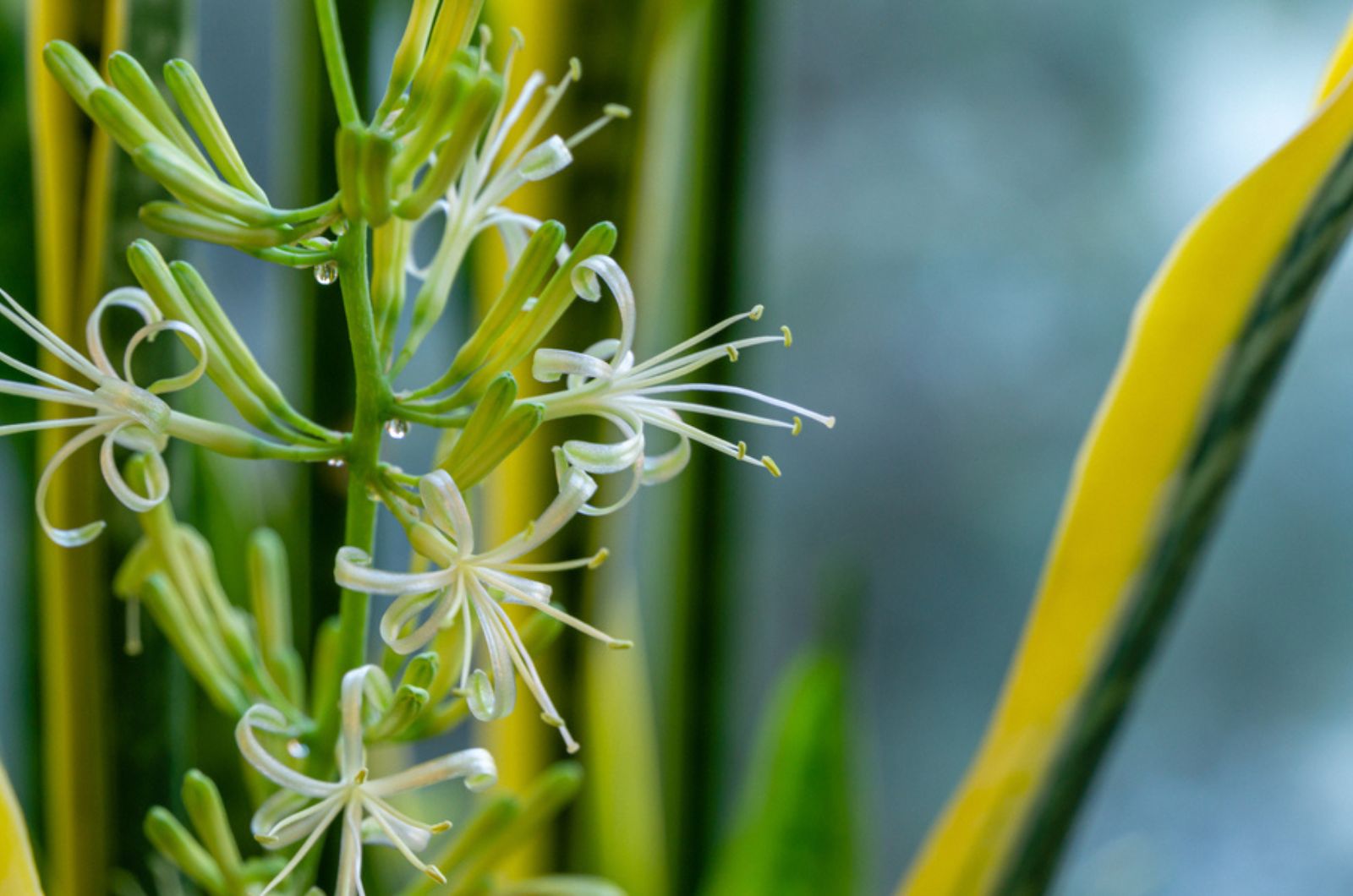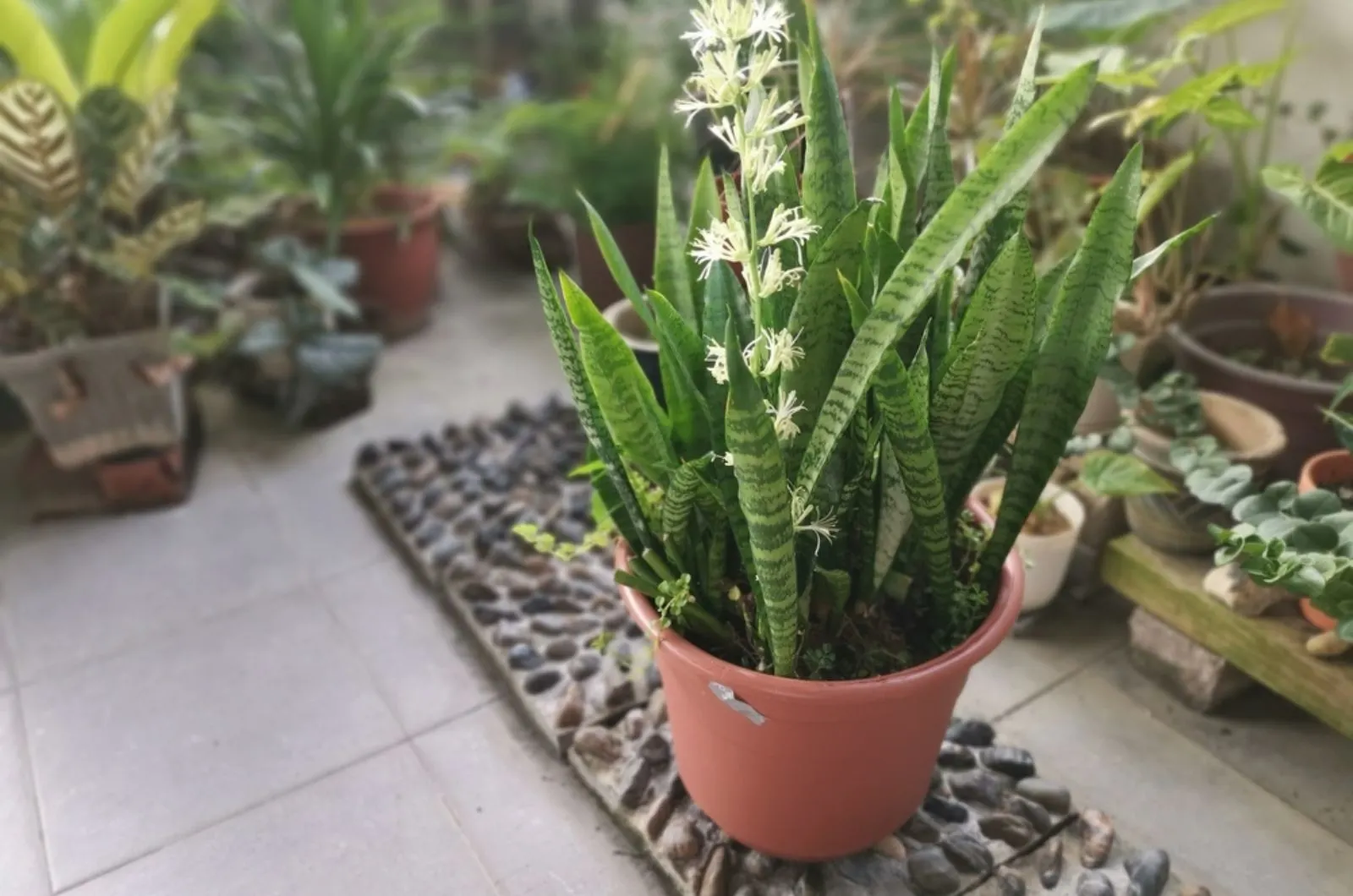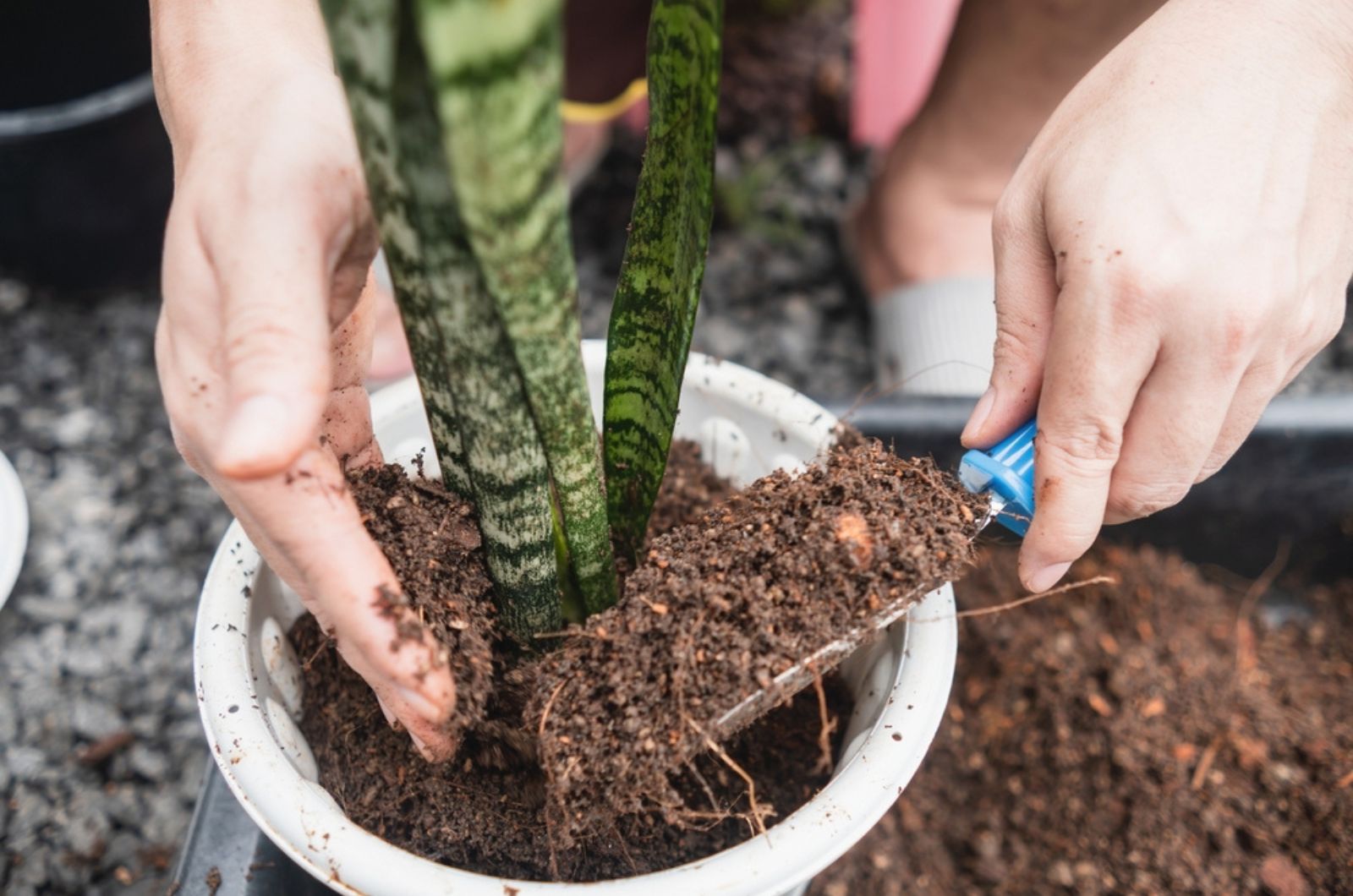A captivating appearance and low care requirements have made the snake plant one of the most frequently chosen plants for indoor environments.
Also known as mother-in-law’s tongue, the snake plant features fleshy, structural leaves often adorned with yellow margins or stripes.
But this plant has one unique feature many growers aren’t aware of: it can and will produce flowers. However, this mainly occurs if you have the blooming variety and ensure the best conditions.
In this article, I’ll show you how to get your snake plant to bloom!
Let’s get started!
More About Snake Plant Flowers
Growing snake plants is relatively easy and you can get a thriving plant with little effort. However, seeing it blooming is very, very rare.
If you ensure the ideal conditions I’ll describe below, you’ll notice tiny buds developing on a long flowering stem. This stem typically reaches 3 feet long and can extend above the tips of the leaves in some cases.
Your mother-in-law’s tongue typically won’t generate more than one stalk. You’ll notice numerous tiny tubular blossoms that have thin petals and develop into clusters.
Lilies and honeysuckle produce similar blossoms. Some snake plant varieties don’t generate flowering stems but rather display clusters of blossoms at the base.
The color of the blossoms also depends on the variety; you may get white, creamy, greenish-white, or yellow flowers.
This succulent plant looks simply breathtaking when it produces flowers; as an added bonus, these flowers emit a strong fragrance.
If everything goes right, you can expect to see these blossoms in spring and they may last for a couple of weeks. At the end of their cycle, the flowers will form berries.
Luckily, the mother-in-law’s tongue plant won’t die after flowering; if you get it to bloom, it will continue generating flowers every year.
Sometimes, blossoms won’t occur even if you ensure the best possible conditions. No one can actually explain this odd feature so follow the guidelines below and hope for the best.
How To Get A Snake Plant To Bloom
The snake plant will thrive and generate blossoms if given sufficient light and water, and if it grows in a suitable soil type and at the right temperatures.
Let’s discuss these requirements in detail.
Ensure Enough Light
Growers keep their snake plants in basements, bedrooms, offices, or near window sills. The main reason you can see this plant in so many locations is its tolerance to different light levels; both low and high sun exposure work well for these succulents.
However, if you want to get it to bloom, you should expose it to bright but indirect sunlight.
Plants in general require a lot of light to generate blossoms, but full sun may scorch the leaves so it’s better to stay on the safe side and ensure indirect light.
While this is a perfect plant for basements and other low-light locations, it won’t produce flowers under such conditions.
The best idea would be to move your mother-in-law’s tongue plant near a sunny window. If harsh sun rays are reaching the leaves, put sheer curtains on the windows.
Water Accordingly
As with all other succulents, you should keep your snake plant on the drier side. Remember that the fleshy leaves of this species can store water to survive longer periods of drought.
Of course, you shouldn’t let your snake plant go too long without water; dehydration in these plants can lead to serious issues.
But, even more dangerous is overwatering, which is the number 1 cause of a dying snake plant.
What to do? A rule of thumb is to water mother-in-law’s tongue plants when their soil is entirely dry. Typically, these plants need watering twice a month during the warmer months, i.e., the growing season.
Watering needs become even lower during colder months because the plant is dormant and doesn’t display new growth, which means it doesn’t need much energy.
Growers often stress their snake plants by delaying watering as much as possible. In my opinion, this method doesn’t work in terms of getting your snake plant to bloom.
Underwatering may cause stunted growth in snake plants, which is the opposite of what we want to achieve.
Choose The Best Soil Type
The right type of soil will encourage your snake plant to display new growth and produce blossoms. These plants are very sensitive to high moisture content in the growing medium so free-draining soil is the key to healthy growth.
Your goal is to enhance drainage and aeration in the snake plant soil by amending it with well-draining materials, such as horticultural sand, perlite, pumice, or coco coir.
The great thing about these plants is that they typically don’t require supplemental feeding for healthy development.
However, if you want to encourage blooming, I recommend adding a small dose of fertilizer rich in phosphorus. Make sure you don’t overfertilize because it will lead to nutrient imbalance, leading to poor growth.
Adjust Temperatures
The snake plant’s temperature tolerance is mainly related to its natural habitat. They’re native to tropical environments and the lowest they can withstand is 50 degrees Fahrenheit.
These plants are hardy in USDA zones 9 through 11 so if you live in these regions, you can keep them outdoors. If you live in cooler climates, it would be best to take your snake plant indoors to overwinter.
Low temperature stress may encourage this plant to generate blossoms but remember that too low temperatures can kill it.
If you decide on the stressing method, it’s better to expose your snake plant to higher temperatures.
Leave Your Snake Plant Rootbound
My fellow snake plant parents frequently ask me if snake plants bloom in all growth stages. Well, it’s very, very rare for a juvenile snake plant to produce flowers.
The more established your plant is, the higher the chances are for blooming; of course, under optimal conditions.
Mature snake plants that receive a lot of light become rootbound faster. Their roots extend quickly and the plant takes up all the space in the pot.
Instead of repotting your snake plant, you can leave it rootbound for some time. This type of stress may also help it to bloom. It will not use the energy for root development due to lack of space, but rather focus it on flower production.
Even though it’s rare for the snake plant to produce blossoms, it’s not impossible. I have to warn you that it takes a lot of time and patience to achieve but the beauty and fragrance of the blossoms are worth it!




